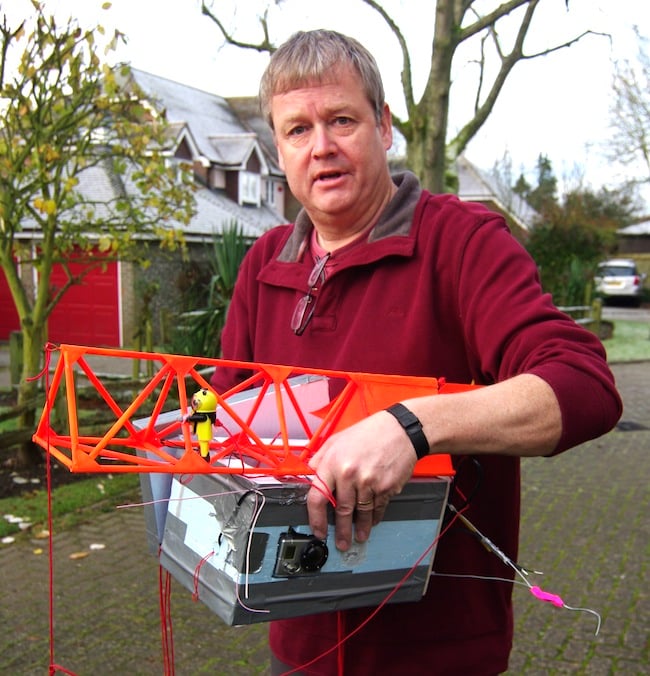This article is more than 1 year old
Hero Playmonaut lost at sea as SPEARS ditches in Channel
MYSTERY of balloon's unpredictable strato-lunge
It's with heavy hearts that we report the loss of the Special Project Bureau's heroic playmonaut, after the Low Orbit Helium Assisted Navigator (LOHAN) balloon launch on Saturday ended in the English Channel off the coast of Sussex.
 The flight was intended to test the Special Project Electronic Altitude Release System (SPEARS) control board at altitude - specifically to see if it would fire the igniter for our Vulture 2 rocket motor at a predetermined height.
The flight was intended to test the Special Project Electronic Altitude Release System (SPEARS) control board at altitude - specifically to see if it would fire the igniter for our Vulture 2 rocket motor at a predetermined height.
Despite a favourable flight path prediction, which had the payload landing well inland to the south of the Berkshire launch site, a dramatic change in wind direction carried it over Worthing for a splashdown some 8km offshore.
Readers should rest assured that we did everything possible to rescue our intrepid pilot and the payload - as you'll see later - but sadly it appears both have succumbed to the salty seas.
Before we get down to to details, let's hear it for Anthony Stirk, Dave Akerman and Neil Barnes (seen left to right, below) who were up bright and early on a very nippy Saturday morning to send SPEARS to the stratosphere.

The night before the launch, we assembled to put together the payload (details here) at Dave's NASA-style mission control complex. Here's the man himself posing in front of a mighty bank of monitors...

..as Anthony contemplated an altogether more modest set of displays:

Neil, meanwhile, tackled some final programming of the SPEARS board:

For the purpose of the test, SPEARS was set up to fire the igniter at 23,000m (79,459ft), well below the predicted balloon burst altitude of 27,000m (88,580ft).
Dave's calculations, based on an "absolutely ridiculous" payload weight of 1,900g and a target ascent rate of 6.6 m/s, meant we'd need to fill a 1,000g balloon with 5.4m3 of hydrogen to create a "neck lift" of 5kg.

Down at the launch site, we took a moment to grab a pic especially for the Reg readers' Hindenburg fan club...

...before Neil brought forth the payload:

Our playmonaut opted to ride the truss, as you can see, although we did insist he be tethered to the structure with a safety line.
